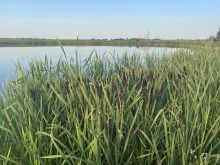EDMONTON – Farmers and ranchers need to be more like hockey star Wayne Gretzky.
Instead of skating to the puck, Gretzky said he skates to where the puck will be.
Farmers and ranchers need to use the same vision and think where agriculture will be to make decisions, said Roger Gates, an extension range specialist from the West River Ag Center in Rapid City, South Dakota.
“Our inclination is to take historical information and make decisions of where we want to go based on historical decisions,” Gates told producers at the Western Canadian Grazing Conference Dec. 3.
Read Also

Crop Life hopeful Pest Management Regulatory Agency will cut red tape
The federal budget includes a line about removing cyclical reviews of pesticides on the market. That could free up the Pest Management Regulatory Agency to focus on other tasks
“The alternative is to develop ideas of where things will be going and base your decisions on those,” said Gates, who helped develop a planning booklet called Strategic and Scenario Planning in Ranching: Managing Risk in Dynamic Times.
Using the booklet, ranchers take a step-by-step approach to analyzing their operation and its outlook.
As part of his master’s thesis, Sean Kelly helped a Wyoming ranch family work through the strategic planning process.
With high grain and feed prices, the family was thinking of shutting down the feedlot part of the farm operation and concentrating on grain farming and cow-calf production.
After spending weeks looking at the ranch’s strengths and goals, the family realized it would be better to keep the feedlot, said Kelly.
“They had a big ‘ah ha’ once they did an analysis,” said Kelly, a soil and range conservationist with the Natural Resources Conservation Services in Glendive, Montana.
Gates said the booklet was created to help extension staff take a more holistic look when helping producers plan for their futures. Farmers and ranchers excel at the daily operations of their place, but often overlook the finances, family and natural resources of an operation.
“This is an opportunity to be creative and think about alternatives,” said Gates.
During planning, ranchers take an inventory of their ranch’s resources. It doesn’t just focus on land and machinery, but includes financial, human and physical resources. It identifies the strengths of everyone who helps out, including bankers, nutritionists and family.
The rancher is then asked to analyze his operation’s strengths, weaknesses, opportunities and threats. A strength could be a good grazing system and a weakness could be poor marketing efforts. An opportunity could be fishing and hunting in the area and a threat could be lack of local labour.
Gates said threats and opportunities are more likely to be external forces that are difficult to control.
The next step is to create a vision statement.
“It gives you direction. Use this as an opportunity to start the conversation. Spend time with people important to the operation,” said Gates.
Once a vision statement has been written, the next step is to look at the gap between the vision and where the ranch is today.
“Analyze the difference between where we are and where we want to be in the future. How are we going to close that gap?”
The benefit of the strategic analysis is that it doesn’t just focus on the production work on the farm, but lifestyle, family and finances. Gates said the final step is to create likely scenarios the business may face and develop a strategic plan to deal with the risks.














